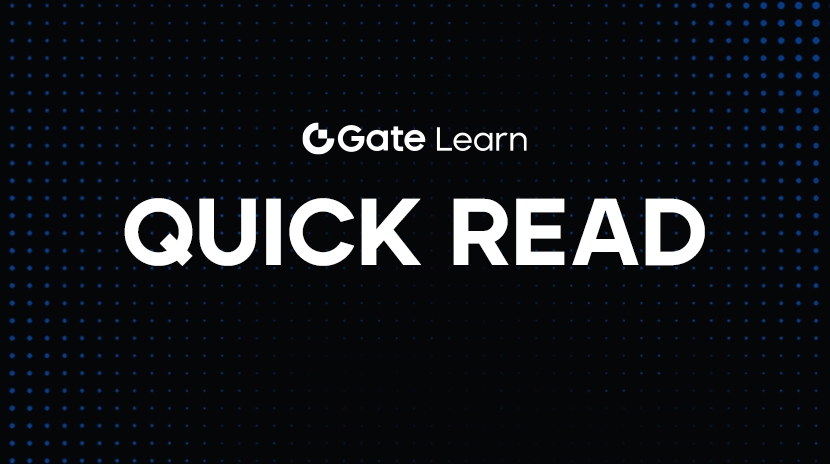What is Shardeum (SHM)?
What is Shardeum?

(Source: shardeum)
Shardeum is a Layer 1 blockchain that supports EVM, using a dynamic state sharding architecture, allowing the entire network to automatically scale according to demand and ensuring atomic interoperability between all shards. For developers, Shardeum supports Solidity and Vyper languages, and contracts will be automatically deployed to different shards, without worrying about the complexity of cross-shard operations, as its underlying design has achieved atomic composability to ensure data consistency and execution efficiency.
The traditional blockchain trilemma (Scalability, Decentralization, Security) often cannot achieve all three at the same time, while the core architecture of Shardeum is designed to solve this problem. It balances high TPS (scalability), participation of untrusted nodes (decentralization), and the PoS+PoQ dual consensus mechanism (security), enabling the blockchain to truly have the potential for large-scale applications.
Shardeum’s consensus mechanism
Shardeum adopts an innovative dual consensus mechanism: Proof of Stake (PoS) and Proof of Quorum (PoQ), which enhances transaction processing efficiency while ensuring network security.
- Proof of Stake (PoS): Nodes need to stake a certain amount of SHM to participate in validation and consensus. If a node behaves maliciously, its staked tokens will be reduced to ensure network trust mechanism.
- Proof of Quorum (PoQ): Shardeum adopts transaction-level consensus, where each transaction is immediately verified and broadcasted upon receipt. Nodes participate in an electronic voting mechanism through electronic signatures. When over half of the nodes have signed (reached the required number), the transaction receives final confirmation (Finality), achieving low latency and immediacy.
This design avoids the congestion and delay caused by the traditional blockchain consensus at the block level, and has the ability to resist censorship and attacks.
Shardeum’s dynamic sharding technology
Shardeum’s sharding is not fixed, but will automatically adjust the number and scale of shards according to the current transaction pressure and resource requirements of the network. Its automatic scaling mechanism ensures:
- Linear scalability: increasing TPS with each additional node.
- Sustainable low fees: maintaining the stability of network usage costs.
- High elasticity and elastic adjustment: dynamically expand or shrink according to demand.
This architecture significantly improves the problem of congestion that traditional Layer 1 public chains are prone to when facing traffic bursts.
Shardeum ecosystem
Shardeum establishes a complete set of development and operation tools, including:
- JSON RPC: Standard interface, convenient for interacting with the chain.
- Local Data RPC (LD-RPC): Allow nodes to access local data, achieving higher flexibility.
- Node types: support various node roles such as validator, consensus node, archive node, etc., providing network diversity and stability.
The Shardeum ecosystem is also actively expanding, attracting developers to build diverse applications such as DeFi, NFT, GameFi, etc. on the platform, becoming a representative of the new generation of high-performance public chains.
Shardeum token economics
According to the official data revised in 2025, Shardeum’s token supply model has been adjusted from the original fixed supply of 508M SHM to a model with dynamic supply control, with an initial issuance of 249,000,000 SHM, mainly distributed as follows:
- Sales: 91,440,000 SHM (36.72%) has a lock-up period of 3 months, followed by daily linear unlocking for 2 years
- Team: 76,200,000 SHM (30.6%) will start linear unlocking after the same 3-month lock-up period
- Foundation: 55,880,000 SHM (22.44%) fully unlocked at Token Generation Event (TGE)
- Ecosystem & Airdrops: 25,480,000 SHM (10.23%) is also fully unlocked at TGE for ecosystem construction and community incentives.

(Source: docs.shardeum)
All transaction fees will be burned, with a long-term expectation of a deflationary token model. Validators’ block rewards will be dynamically generated based on actual network demand, rather than pre-mined distribution.
Token Functionality
- Staking and Security: Nodes need to stake SHM to participate in the network, ensuring security.
- Fees and operation costs: SHM serves as the Gas for trading and smart contracts.
- Rewards and incentives: used to incentivize participants, validators, and builders.
- Ecosystem funding and airdrops: providing community building and project support.
SHM is the same as ETH, accurate to 18 decimal places, and adopts the EIP-1559 model, where transaction fees will be burned, forming a long-term deflationary model.
Start trading SHM spot now:https://www.gate.io/trade/SHM_USDT

Summary
Shardeum is redefining the technical framework and economic model of Layer 1 public chain, from dynamic sharding to instant consensus, from elastic supply to deflationary design. Every innovation points to the same core goal: Mass Adoption. In the blockchain ecosystem, a public chain that truly achieves high efficiency, decentralization, and security is still rare. Shardeum not only solves the trilemma of blockchain, but also provides a future architecture capable of supporting global Web3 applications. For developers, users, and builders, SHM is not just a token, but also a ticket to enter the future blockchain infrastructure.





